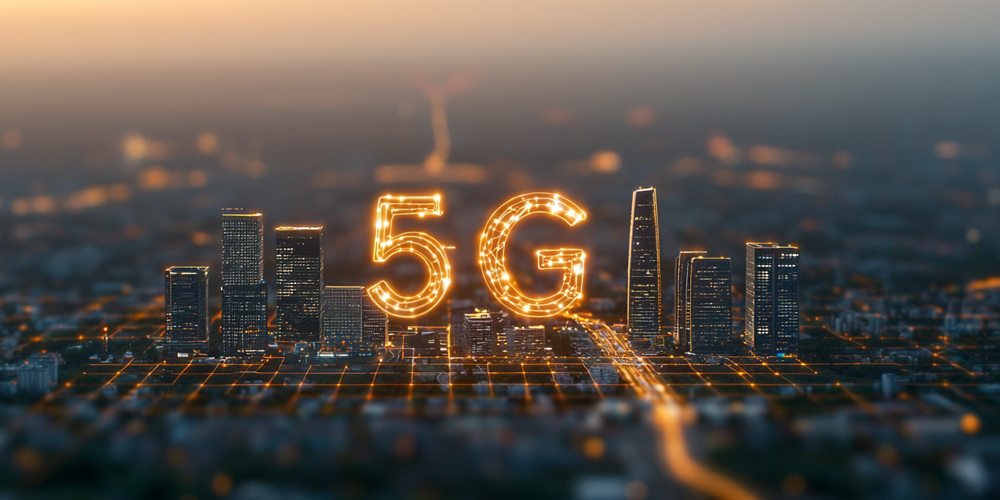5G vs. 4G: What’s the Difference and Why It Matters

What is 4G Technology?
4G, or fourth-generation technology, was introduced to provide faster mobile internet access compared to its predecessor, 3G. It enabled users to stream videos, browse the web, and use applications more efficiently. The key features of 4G include:
- Speed: 4G networks offer speeds up to 100 Mbps in mobile scenarios.
- Latency: The latency is around 30 to 50 milliseconds.
- Technology: 4G primarily relies on LTE (Long Term Evolution) technology.
Benefits of 4G
The introduction of 4G technology brought several benefits:
- Enhanced Streaming: Users could enjoy high-definition video streaming without buffering.
- Improved Connectivity: It provided more stable connections in crowded areas.
- Advanced Applications: 4G enabled the rise of mobile applications and services.
Challenges of 4G
While 4G technology offered significant improvements, it also faced challenges:
- Network Congestion: With the rise in smartphone usage, networks often became congested.
- Limited Device Support: Older devices struggled to fully utilize 4G capabilities.
- Inconsistent Coverage: Rural areas often experienced weaker connections.
What is 5G Technology?
5G, or fifth-generation technology, represents the latest evolution in mobile communications. It is designed to provide significantly faster speeds, lower latency, and greater capacity than 4G. The key features of 5G include:
- Speed: 5G networks can achieve speeds up to 10 Gbps.
- Latency: Latency can drop to as low as 1 millisecond.
- Capacity: 5G can support up to 1 million devices per square kilometer.
Benefits of 5G
The advantages of 5G technology are vast and transformative:
- Real-Time Communication: 5G enables real-time applications, such as remote surgery and autonomous vehicles.
- Enhanced Virtual Reality: Users can experience high-quality VR and AR applications seamlessly.
- Smart Cities: 5G will support the infrastructure needed for smart city initiatives, improving public services.
Challenges of 5G
Despite its numerous advantages, the rollout of 5G technology comes with challenges:
- Infrastructure Costs: Building the necessary infrastructure for 5G is expensive.
- Health Concerns: Some individuals express concerns about potential health effects from increased exposure to radiofrequency radiation.
- Security Issues: The increased connectivity that 5G enables may lead to greater security vulnerabilities.
Key Differences Between 5G and 4G
While both 4G and 5G serve the same fundamental purpose, several key differences set them apart. Understanding these differences can help users and businesses make informed decisions.
1. Speed
The most noticeable difference is speed. 5G offers speeds that are up to 100 times faster than 4G. This increase allows for instant downloads and streaming without interruption. For example, a full-length HD movie that takes several minutes to download on 4G can be completed in seconds on 5G.
2. Latency
Latency refers to the delay before a transfer of data begins. While 4G latency ranges from 30 to 50 milliseconds, 5G can reduce latency to as low as 1 millisecond. This improvement is crucial for applications requiring real-time responsiveness, such as gaming and autonomous driving.
3. Capacity
5G can support a significantly larger number of devices within a given area compared to 4G. This capacity is essential as the number of connected devices continues to grow. With 5G, urban areas can handle increased traffic without compromising service quality.
4. Coverage and Frequency Bands
4G operates on lower frequency bands, providing broad coverage but limited speed in densely populated areas. In contrast, 5G utilizes higher frequency bands, allowing for faster speeds but requiring more infrastructure. As a result, 5G coverage may initially be spotty in some regions but will expand as networks develop.
Real-World Applications of 5G vs. 4G
The differences between 4G and 5G translate into various real-world applications. Understanding these applications can illustrate why 5G matters for consumers and businesses.
1. Streaming Services
While 4G allows for smooth streaming of HD content, 5G takes it a step further. With 5G, users can enjoy 8K video streaming and immersive experiences without buffering or interruptions. This capability opens new avenues for content creators and streaming platforms.
2. Smart Home Technology
Smart home devices require stable connectivity for seamless operation. While 4G supports basic functionalities, 5G enables advanced features like real-time monitoring and control of multiple devices simultaneously. This enhances the smart home experience and encourages further innovation in this space.
3. Healthcare Innovations
The healthcare industry is experiencing a significant transformation through 5G technology. Telemedicine has gained popularity, especially during the pandemic. 4G supports basic video consultations, but 5G allows for high-definition video and real-time data transmission. This capability can facilitate remote surgeries and advanced diagnostics, improving patient outcomes.
4. Autonomous Vehicles
The automotive industry is investing heavily in autonomous vehicle technology. 4G networks can struggle to handle the data needs of self-driving cars. In contrast, 5G’s low latency and high capacity are essential for enabling real-time communication between vehicles and infrastructure. This technology will enhance safety and efficiency on the roads.
Challenges of 5G Implementation
Despite its numerous advantages, the rollout of 5G technology comes with challenges. Addressing these challenges will be crucial for successful implementation.
1. Infrastructure Costs
Building the necessary infrastructure for 5G is expensive. The deployment of small cells and antennas requires significant investment. Network providers must balance the costs while ensuring widespread coverage. This investment is critical for ensuring the reliability and speed of 5G networks.
2. Health Concerns
Some individuals express concerns about the potential health effects of increased exposure to radiofrequency radiation from 5G networks. While studies have shown that 5G is safe, addressing public concerns is vital for widespread adoption. Transparency and education about safety standards will play a crucial role in alleviating fears.
3. Security Issues
The increased connectivity that 5G enables may lead to greater security vulnerabilities. With more devices online, the potential for cyberattacks grows. Ensuring robust cybersecurity measures will be essential to protect sensitive data and maintain user trust. Collaboration between industries and government agencies will be necessary to create a secure 5G environment.
The Future of 5G and 4G
The transition from 4G to 5G is not merely a technological upgrade; it represents a shift in how we interact with the world. As more devices become interconnected, the implications for society, business, and everyday life will be profound.
1. Continued Development of Smart Cities
5G will be a driving force behind the development of smart cities. Improved connectivity will enable smarter public services, from traffic management to waste management. As cities adopt 5G, urban living will become more efficient and sustainable. This will enhance the quality of life for residents and reduce environmental impacts.
2. Expansion of IoT Applications
The Internet of Things (IoT) will flourish with the advent of 5G. As more devices connect to the internet, industries will harness real-time data to improve operations. From agriculture to manufacturing, 5G will enhance productivity and innovation. This technological synergy will create new business models and opportunities.
3. Evolution of Work and Communication
The way we work will evolve with 5G. Remote work and virtual collaboration tools will become more effective. Enhanced connectivity will allow for immersive experiences in virtual meetings and training sessions, reshaping workplace dynamics. Businesses will be able to operate more flexibly and efficiently.
Consumer Considerations
As consumers consider transitioning to 5G, several factors should be taken into account:
1. Device Compatibility
Not all devices are 5G compatible. Users should check if their smartphones or devices support 5G to take full advantage of the technology. Upgrading to a compatible device may be necessary to experience the benefits of 5G.

2. Plan Availability
Mobile carriers are gradually rolling out 5G plans. Consumers should research available options in their area. Understanding the pricing and features of different plans will help users make informed decisions.
3. Geographic Coverage
5G coverage is expanding, but it may not be available in all areas. Users in rural regions may experience delays in rollout compared to urban areas. Checking coverage maps provided by carriers will provide insight into availability.
Conclusion
In summary, understanding the differences between 5G and 4G is essential in today’s technology-driven world. While 4G laid the foundation for mobile connectivity, 5G promises to elevate it to new heights. The implications of 5G technology extend far beyond faster download speeds; they will revolutionize industries and reshape our daily lives. As we embrace the future of mobile technology, it is crucial to stay informed and adapt to these changes. The journey from 4G to 5G is just the beginning of a new era in connectivity.











